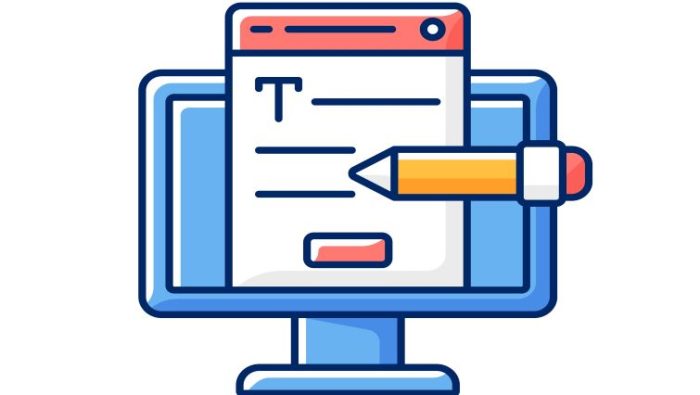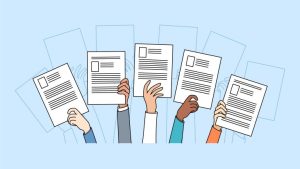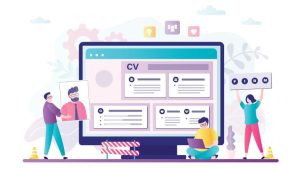How To Age-Proof Your Resume
 Publié le 2 May 2022
Publié le 2 May 2022
Make sure that you make a great first impression with recruiters and successfully start a new phase of your career by knowing how to age-proof your resume.
If you’re in the workforce for decades, chances are you have tons of valuable wisdom and experience. But while job hunting, being an older worker (40 or above) comes with numerous hurdles — one of them is the possibility of age discrimination.
Although discriminating against candidates based on their age is illegal, it still happens in many organizations. People above 40 years of age are often perceived as expensive, lacking technical skills and knowledge of the latest tools, or generally not up-to-date or innovative as younger candidates.
If you’re concerned about facing bias during the job search due to your age, the good news is that there are multiple ways to showcase that you are the right person for the role.
Since a resume or CV is the first thing recruiters will check to learn about you, it’s highly crucial to know how to age-proof your resume to stand out among others and land your dream job.
But what information should you include and what can hinder your chances of finding a suitable job? That’s exactly what we’re going to discuss in this post.
This blog post will look into five effective ways to help you develop a resume that will get you noticed for all the right reasons. Let’s take a closer look at how to age-proof your resume.
How To Age-Proof Your Resume
- Highlight your experience
- Remove older dates
- Include relevant freelance experience
- Mention latest skills
- Join the LinkedIn bandwagon
1. Highlight your latest experience
When you have decades of work experience and success under your belt, it can be tempting to showcase all you’ve done and achieved within different organizations.
Including it all in one document, however, can do more harm than good as recruiters focus more on what you’ve done lately instead of what you’ve been doing all your life. Plus, it can overwhelm the reader and make them focus on your age rather than your skills for the job.
The experience of the last 10 to 15 years is sufficient to showcase your fitment for the role. Make sure the positions you’ve held in these years are relevant to your current job search and convey less about the earliest jobs.
Remember: Employers aren’t interested in your first job straight out of college — especially when it has zero relevance to the kind of position you’re searching for. So, avoid making your resume unnecessarily exhaustive and comprehensive.
2. Remove older dates
If any of your certifications, education, or work experience fall outside the 15-year window, leave the date OFF of your resume.
For example, if you mention that you graduated 20 years ago, don’t state the year or date — remove it altogether. This is because including a year can invite the possibility of age discrimination or multiple generational assumptions about you.
Plus, it can alert the recruiters that you’re older than the average candidate they expect to see for the role, affecting your chances of getting hired. Instead, just mention the name of the certificate or degree, your field of study, and the institution where you received it.
Sure, you have to list dates in your work experience section. But, you can age-proof your resume by stating the recent roles and dates. If you’ve earned professional certificates, remove the year but do mention the certification’s expiry date. Also ensure that your resume format is up-to-date, highlights your latest skills, and has the URL of your up-to-date LinkedIn profile.
3. Include relevant freelance experience
If you have done any freelance work or have a side hustle, mention that under your current work experience section. However, make sure that it is somewhat related to the role you’re applying for.
Remember to make sure you have acquired this experience in the past 10-15 years to age-proof your resume. This can help in two ways: First, it shows your entrepreneurial side, and second, it shows that you’re trying to learn new things and work on unique projects related to your desired role. Don’t worry if there are gaps in your freelance experience, as it will still serve to demonstrate your work ethic and commitment to develop outside the parameters of your role.
4. Mention latest skills
As a job applicant considering how to age-proof your resume, it’s crucial to show recruiters that you have the latest skills and are up-to-date with the latest technological trends, software, process, applications, and platforms.
Make sure to include hard skills that are functional and quantifiable in your resume. You can emphasize your hard skills over your soft skills in your resume, as you can place greater focus on these in your cover letter and during phone calls or job interviews.
List all the types of applications you know, such as Google Drive, MS Office, Slack, Zoom, Microsoft Teams, Trello, Notion, and others.
If you also know how to use any industry-specific software, mention that as well. For example, if you’re applying for the role of an email marketer in a company, state that you know how to operate email marketing tools, like Mailchimp, ActiveCampaign, and other relevant programs they use on a daily basis.
Furthermore, even if you’re not applying for a technical role, list the various technical proficiencies you have that align with that particular job. And if you don’t have any, consider taking a few online courses, as you can gain valuable insights and demonstrate that you are committed to continuous learning.
5. Join the LinkedIn bandwagon
LinkedIn is a goldmine for both job applicants and recruiters. It’s an excellent platform for networking with people within your industry, advertising your candidacy to potential employers, and finding high-paying jobs in your desired field of work.
Since 90% of recruiters check the candidate’s social media profiles to make their hiring decisions, it makes sense for every candidate — irrespective of the job they’re applying for — to have a well-built profile on LinkedIn.
A LinkedIn profile is like a free Facebook profile that highlights your current role, education, work experience, awards, skills. You can expect almost every recruiter to take a peek into your profile, even if they don’t ask directly for the profile link.
So, make sure to optimize your profile as per your recent skills, work experience, and role. You can also customize your LinkedIn profile URL, share valuable insights, network with others, and add the profile link on top of your resume or under the “contact details” section so that recruiters can find you easily and quickly.
The takeaway
It’s easy to feel insecure about multiple things while doing a job search — your age being one of them. Since ageism is common in today’s job market, ensure your candidacy gets the consideration it deserves — by knowing how to age-proof your resume. Whether you create it from scratch or make a few tweaks, it is worth investing the time learning how to age-proof your resume so that you can get hired for the job you want.
Updating your resume can be pretty overwhelming, no matter your age. But, following the above resume age-proofing tips, you can easily get your foot in the door and have a chance at an exciting new professional opportunity.







